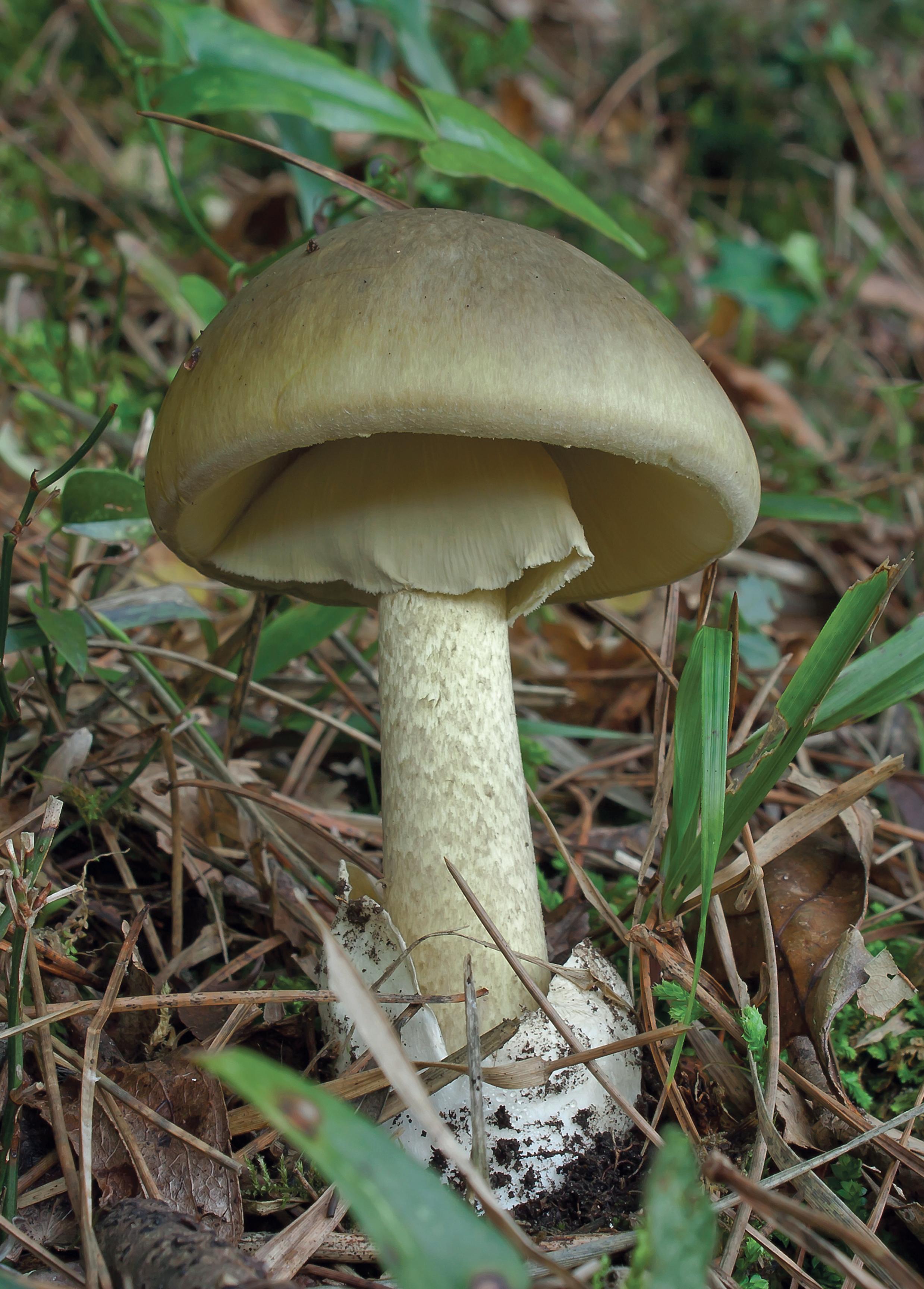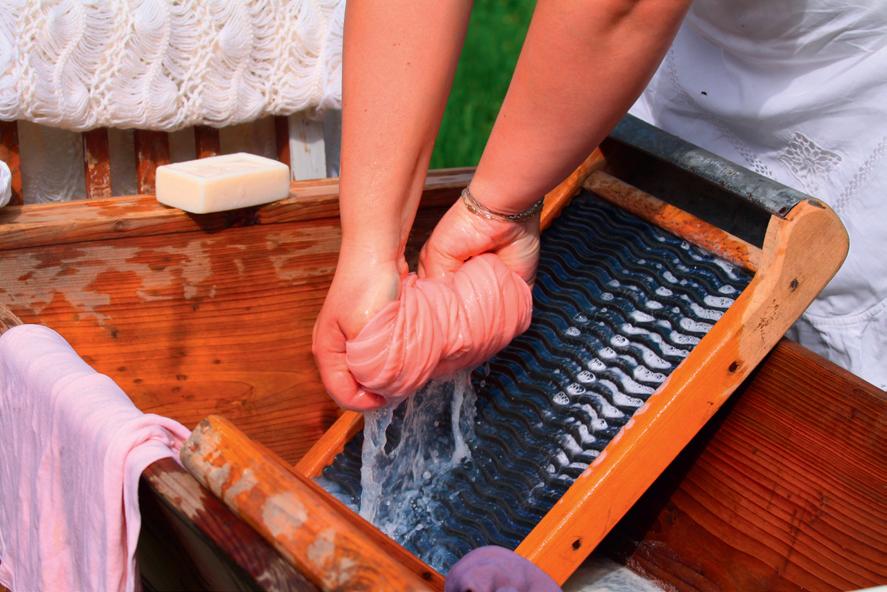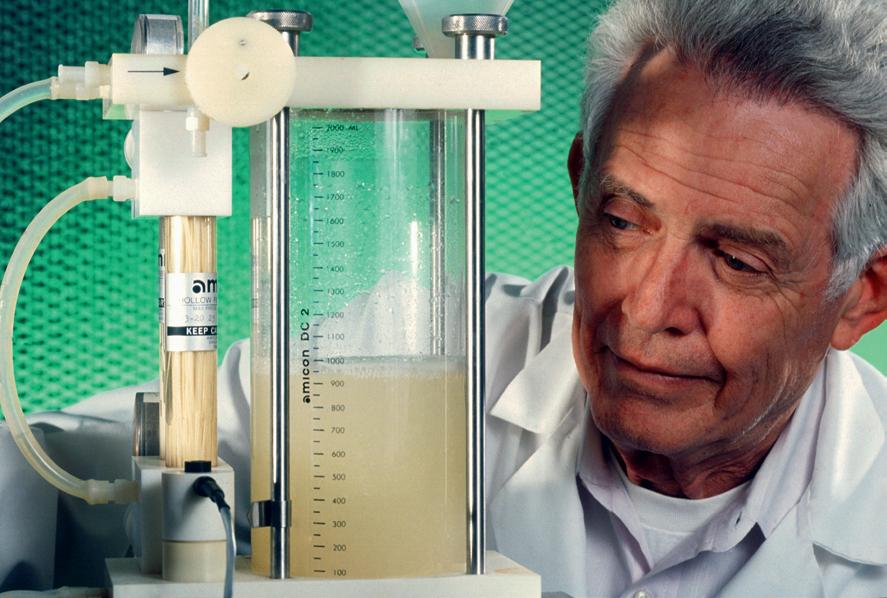

3 EnzymEs
priOr KNOwlEdgE
You may remember, from Key Stage 4, that catalysts are substances that can alter the rate of a chemical reaction without themselves being changed at the end of the reaction. You may also know that increasing temperature can increase the rate of many reactions, and you may recall that pH is a measure of the acidity or basicity of a solution, which is determined by the concentration of hydrogen ions in it. Before you begin this chapter you may want to remind yourself about protein structure (Chapter 2).
lEarNiNg ObJEcTivEs
In this chapter we will look at the essential roles of enzymes – biological catalysts – in controlling the metabolic reactions that take place in living organisms.


(Specification 3.1.4.2)

Enzymes make life possible because without them, the vast majority of chemical reactions that take place inside living organisms would not happen. Enzymes catalyse metabolic reactions, reducing the energy that is needed to allow these reactions to start.
Each enzyme is specific for one type of reaction, so our bodies manufacture hundreds of different enzymes. Cells can control the activity of enzymes by producing inhibitors that attach to enzyme molecules and prevent them from working. This is one of the ways by which cells can prevent a chaotic medley of reactions taking place all at the same time.
Many inhibitors are important for the day-to-day working of an organism’s body, while others are used to defend the organism from attack by other species. For example, the seeds of many plants belonging to the pea and bean family contain large quantities of protein, which provides nutrients for the growing young seedling. This high protein content makes the pea and bean seeds a tempting food for many animals. However, the seeds also contain an inhibitor that blocks the action of the protein-digesting enzyme, trypsin, so that animals that eat the seeds are unable to digest and absorb the proteins, and are likely to suffer abdominal pain. Cooking the beans destroys the inhibitor and makes them safe to eat.
Ingesting some enzyme inhibitors can have devastating consequences. Eating just small quantities of the death cap mushroom, Amanita phalloides, can be fatal, even when the mushroom has been cooked. This is because the fungus contains an inhibitor of the enzyme that catalyses the production of mRNA from a DNA template, which is the first step in protein synthesis. If this process is inhibited, the organism will die.



Not all enzyme inhibitors produced by other organisms are harmful to us. Penicillin is an inhibitor of the enzyme that helps to build and strengthen the cell walls of bacteria. The enzyme inhibitor is produced naturally by some fungi, presumably to help them to compete with and destroy bacteria that share their habitat. Penicillin is now manufactured on an industrial scale and is used as an antibiotic. Because penicillin specifically inhibits only the enzymes involved in producing bacterial cell walls, it has no direct effect on our own body cells. It is, therefore, a drug that can be used safely inside the human body.

Enzymes and chemical reactions
3.1 Biological catalysts
A huge number of chemical reactions – known as metabolic reactions – take place inside every living cell. Some of these reactions release energy, some synthesise new substances and others break down waste products. Enzymes enable these reactions to happen and, most importantly, enzymes make it possible for the reactions to happen quickly enough at body temperature.
Many chemical reactions need an input of energy to get them going and this energy is normally supplied as heat. Enzymes are catalysts. They reduce the amount of energy that is needed to get a reaction going, but they are not themselves changed at the end of the reaction. This makes them very valuable substances, not only in living organisms, but also for human use. Enzymes from yeast have for centuries been used to brew alcoholic drinks. Enzymes are also commonly added to detergents to digest food stains, and many more industrial processes in the future are likely to make use of enzymes.
Enzymes are not living things. They are proteins. The properties of proteins help to explain how enzymes work and how they lower the energy needed to get a reaction going. The protein structure of enzyme molecules does, however, make them sensitive to environmental conditions both inside and outside the body, which means that changes in temperature or pH can disrupt enzyme action. In humans, severe over-heating or getting so cold that core body temperature falls can upset the delicate balance of enzyme-controlled reactions in the body’s cells and can be fatal.
3.2 EnzymEs and chEmical rEactions
Hydrogen peroxide is a colourless liquid (it looks just like water). It has the formula H2O2. If you put some hydrogen peroxide into a flask or test tube it will gradually – very, very slowly – decompose to form water and oxygen. The equation for this reaction is:
2H2O2 → 2H2O + O2
The little bubbles of oxygen that are given off are the only evidence that this reaction is happening.
If you want to liven things up, you can add a tiny piece of fresh, raw liver to the flask. Immediately, the hydrogen peroxide begins to bubble furiously. The bubbles form a rapidly expanding froth, which climbs up the flask and may overflow (Figure 1).

What is happening when you add the liver? The liver cells, like all living cells, contain an enzyme called catalase. This enzyme catalyses the decomposition reaction shown in the equation above.
Activation energy
We have seen that hydrogen peroxide molecules will break apart to form water and oxygen, but they normally do this only very slowly. This is because the reaction needs energy to make it happen. You could speed the reaction up by heating the hydrogen peroxide. The heat energy (thermal energy) that you put in will give the hydrogen peroxide molecules more energy and make them split apart more readily. However, this is not a good idea, as the reaction can be very violent and the hydrogen peroxide is likely to explode and shatter its container.
The minimum energy needed to make a reaction start is called the activation energy. Heating raises the energy of the hydrogen peroxide, and when the activation energy is reached, the reaction takes place very rapidly. Figure 2 shows the energy changes that take place during the reaction. Before the reaction takes place, the energy of the molecules is steady. Then something happens to raise the energy level – perhaps one molecule is hit by another
very hard, or perhaps they are heated up. If the molecules reach the activation energy, the reaction then takes place, leaving the product molecules at a lower energy level.
Enzymes and activation energy
Enzymes make reactions happen without having to increase the temperature. They do this by reducing the activation energy required for the reaction to take place.
Figure 3 shows the effect of an enzyme on the activation energy of the same reaction that is shown in Figure 2. You can see that the activation energy for the reaction is much lower with the enzyme than it is without the enzyme. This is just what is needed in living cells.
Cells cannot heat themselves up very much. If they could, the effects would be catastrophic because the high temperatures would damage the proteins, enzymes and other molecules from which they are made. Enzymes allow the cell’s metabolic reactions to take place at normal temperatures.
Think about this in the context of catalase. Hydrogen peroxide is produced as a by-product (in this case an unwanted product) of several different metabolic
reactions. Hydrogen peroxide is a powerful oxidising agent, and it will quickly damage living cells. But because all cells contain catalase, any hydrogen peroxide is broken down almost as soon as it has been formed, in a relatively steady manner, without having to raise the temperature.
The molecule that an enzyme allows to react is called its substrate. The molecules produced at the end of the reaction are the products. The substrate for catalase is hydrogen peroxide, while water and oxygen are the products of the reaction that the enzyme catalyses.
› Enzymes are proteins that act as biological catalysts.
› Enzymes work by lowering the activation energy of a reaction, so making it possible for the reaction to happen at normal temperatures in a given organism.
3.3 how EnzymEs work
We have seen that enzymes are proteins. In fact, they are globular proteins. Their molecules are made of one or more polypeptide chains curled into a very precise three-dimensional shape.
Every enzyme molecule has an active site. This is often a ‘dent’ or ‘depression’ in the three-dimensional structure of the globular protein. The shape of the active site is very precise. It is lined with R groups (side chains) of particular amino acids that make up the polypeptide chains.
The substrate of the enzyme has a complementary shape to the active site. In a solution containing both enzyme and substrate molecules, both kinds of molecules will be in constant motion. They will often collide with one another. When a substrate molecule hits the active site on an enzyme molecule it will interact with the R groups of the amino acids lining this site. This interaction causes a small shape change in the active site, making it a perfect fit for the substrate molecule. The substrate slots into the active site and forms temporary bonds with the R groups. The combination of enzyme and substrate is called an enzyme–substrate complex (Figure 4).
This interaction also changes the shape of the substrate molecule, which stresses chemical bonds,
and lowers the activation energy needed for the substrate to break apart into product molecules. The substrate splits into its product molecules, which leave the active site of the enzyme. The enzyme remains completely unchanged, and is now ready to interact with the next substrate molecule that bounces into it.
What we have just described explains how an enzyme can cause a substrate molecule to break apart. Many reactions, however, involve two substrate molecules joining together. In this case, the active site of the enzyme accommodates the two substrates side by side, holding them in exactly the right position for them to react together. The substrates combine to form a product.
This way of explaining how an enzyme works is called the induced fit model of enzyme action. ‘Induced fit’ means that the arrival of the substrate causes (induces) a small shape change in the enzyme’s active site, allowing the substrate to bind with it. You may have met the ‘lock and key’ model of enzyme activity, where the enzyme is thought of as a lock into which the substrate – the key – fits exactly. This is an older model of enzyme action. The induced fit model is a more recent model that is not completely different from the lock and key model, but is a more detailed explanation of it. You simply have to imagine a slightly flexible lock and a slightly flexible key that mould themselves to fit one another once they come into contact.
It has probably taken you several minutes to read this section (longer if you took time to look carefully at the diagram). In that time, one catalase molecule could have caused the breakdown of countless billions of hydrogen peroxide molecules. It is difficult to comprehend, but a single catalase molecule can break down more than 40 million molecules of catalase in
one second. So the enzyme–substrate complex shown in Figure 4 exists for only an unimaginably short time.
QUEsTiONs
1. Enzymes are specific. A particular enzyme can catalyse only one chemical reaction. For example, catalase will only break down hydrogen peroxide. Some enzymes break only one type of bond – for example, peptidase breaks peptide bonds. Use your knowledge of how enzymes work to explain why enzymes are specific.
2. A small change in the primary structure of an enzyme molecule can prevent it from working. Use your knowledge of protein structure (Chapter 2) to explain why this is so.
KEy idEas
› An enzyme molecule has an active site into which its substrate molecule fits.
› The arrival of the substrate molecule slightly changes the shape of the active site, so that the enzyme and substrate can bind together. This is called the induced fit model.
› The temporary combination of the enzyme and substrate is called an enzyme–substrate complex.
› Enzymes can act only on their specific substrate, because only that substrate has the correct shape to bind perfectly with the enzyme’s active site.
3.4 Factors aFFEcting EnzymE activity
Many different factors influence the rate at which an enzyme-catalysed reaction takes place. Temperature can affect the rate of the reaction, while temperature and pH can both affect the shape of the enzyme molecule. The concentrations of both the enzyme and the substrate affect the frequency with which enzyme–substrate complexes form. Other molecules, called inhibitors, can interfere with the reaction.
Temperature and enzyme activity
The rate of a chemical reaction normally increases as the temperature increases. This is because the molecules gain kinetic energy, so they move faster, collide more often and the collisions are more likely to have enough energy to allow the reaction to happen. This is also true for reactions controlled by enzymes, because substrate molecules will collide with the active site more frequently.
However, as the temperature increases, the atoms within the enzyme molecules also gain energy and vibrate so rapidly that the weak hydrogen bonds that help to maintain the tertiary structure of the protein molecule break and the molecule can unravel. Since the shape of the active site in an enzyme molecule is crucial for it to work, any change in shape will inactivate the enzyme. Once broken, the hydrogen bonds generally do not re-form in their original positions. So, even when the temperature is lowered, the enzyme cannot regain its functional shape. We say that the enzyme is denatured. Note that you should never say that enzymes are ‘killed’, since they were never ‘alive’ in the first place.
The graph in Figure 5 shows these effects. You can see that, as the temperature rises from 0°C up to the optimum of 38°C, the rate of reaction increases exponentially. At temperatures higher than this optimum, the rate of reaction drops much more steeply. Note that this graph shows temperature on the x-axis, not time. If you are asked to describe it, take care that you do not fall into the trap of using ‘time-related’ words inappropriately. For example, it would be wrong to say ‘As temperature increases above the optimum, the reaction rate quickly decreases’.
Most enzymes in the human body are denatured at temperatures above about 45°C. They work fastest at about 40°C; this is their optimum temperature. Human body temperature is about 37°C, which is just below the optimum for most of our enzymes. It is
thought that this is an adaptation for when our core body temperature does rise above normal – as a result of an illness, for example – and so our body’s enzymes can still work and we will remain alive.
Many organisms have enzymes that work perfectly at much higher or lower temperatures. Some fish live in the Antarctic sea, where the water temperature never rises above 2°C. They are active at this temperature, but die if the water warms by more than a few degrees. Some species of worms and bacteria can live near volcanic vents in the ocean and close to hot springs, where the temperatures are close to boiling point. Many of the enzymes isolated from these specialised organisms are proving useful in manufacturing industry.
QUEsTiONs
3. Look at Figure 5. Explain why the rate of reaction is so slow below 10°C.
4. What are the rates of reaction at 10°C, 20°C and 30°C?
5. What do you notice about the effect of increasing the temperature by 10°C?
6. What would be the rate of reaction if some of the enzyme and its substrates were frozen and then warmed to 40°C?
7. The graph in Figure 6 shows the effect of temperature on a protease used in washing powders.
a. What is the optimum temperature of this protease?
b. Suggest the advantage of using a protease with this optimum temperature in a washing powder.
8. Proteases hydrolyse protein molecules into amino acids. Explain how proteases in washing powders help to remove protein stains such as blood or egg from clothes.
stretch and challenge
9. Suggest why the curve above 40°C does not drop down directly to 0.
Until the late 1960s, washing powders contained a detergent only. These powders worked by emulsifying fats in stains and they required high temperatures and vigorous washing to work. This often resulted in wear on materials and faded colours.
Much work went into harnessing the power of enzymes for cleaning clothes. Although the first patent for using enzymes to clean clothes was granted in 1913, enzymes were not used in commercial washing powders until 1969.
Early attempts to incorporate protease enzymes into washing powders failed because people developed skin irritations, and it was not until the enzymes were enclosed in dust-free granules wrapped in cellulose that they became widely used. Washing powders that contain enzymes are commonly known as biological washing powders.
Stains are made up of different types of molecules, and so different enzymes are needed to hydrolyse proteins (found in blood and egg), starches, and fats and grease. Commercial washing powders contain lipase enzyme to hydrolyse fat, amylase to hydrolyse carbohydrate, and a protease that is produced commercially in bacteria, for hydrolysing peptide bonds. The use of enzymes in biological washing powders enables clothes to be washed at lower temperatures, causing less damage to the fabric and using less energy for heating the water.
From December 2013, all new washing machines must be able to wash at temperatures as low as 20°C, which greatly reduces the running costs of the washing machines. Some washing powders now also contain a cellulase that hydrolyses microfibrils formed on cotton by agitation. This serves to restore and brighten colours.
Questions
A1. Explain why the early use of protease enzymes caused skin irritation.
A2. Explain why different enzymes are needed for different types of stains.
A3. What could be the disadvantage of washing clothes at 20°C?

A4. Some students wanted to compare the ability of two washing powders – one biological and one non-biological – to hydrolyse protein. They used blocks of gelatine as a protein and put them in beakers of water with either the biological or non-biological powder. The students left the blocks for two hours and then measured them to see how much had been digested.
a. What variables should the students control and why?
pH and enzyme activity
As well as having an optimum temperature, enzymes also have an optimum pH. Even small changes in pH either side of the optimum will affect enzyme activity, causing small changes in the shape of the active site. Most enzymes are denatured in solutions that are strongly acidic or strongly alkaline. This is because the hydrogen ions (H+) in an acid or the hydroxyl ions (OH–) in an alkali are attracted to the charges on the amino acids in the polypeptide chains that make up the enzyme. The hydroxyl and hydrogen ions interact with the amino acids and disrupt the hydrogen bonds and ionic bonds that maintain the enzyme molecule’s three-dimensional shape, destroying the active site of the enzyme. Once the original structure is lost it cannot re-form and the enzyme no longer binds to its substrates.
b. How could they control each variable you have mentioned?
c. How could the investigation be improved?
A5. Could the method used in this investigation provide enough evidence to indicate how well the two washing powders would clean clothes?

assigNmENT 2: iNvEsTigaTiNg ThE EffEcT Of ph ON ENzymEs
(MS 1.3, MS 3.1, MS 3.2, PS 1.2, PS 3.1)
Extremes of pH rarely occur inside the cells of living organisms, and most enzymes have an activity curve similar to the one in Figure 7, with an optimum pH somewhere near neutral. However, some enzymes work best at extreme pH values. For example, proteases in the acid environment of the stomach have an optimum pH of about 2 and are denatured above pH 6.
The marine shipworm is a mollusc that can bore into woodwork. It secretes two digestive enzymes into the wood, using a source of nitrogen obtained from symbiotic bacteria. One of the enzymes is a cellulase that breaks down cellulose in wood. The second is a
protease, which has been found to be very good at removing the enzyme lysozyme that accumulates on contact lenses.
The marine shipworm protease has an advantage over other proteases used for cleaning contact lenses because it remains active in the presence of the slightly alkaline solution of hydrogen peroxide that is used to disinfect contact lenses. This means that contact lenses can be cleaned and sterilised at the same time using a single solution, rather than the conventional two solutions.
Questions
A1. Explain why the shipworm needs a source of nitrogen to produce its enzymes.
A2. Why is the production of cellulase a problem for wooden boats?
A3. Table A1 shows the rate of reaction of the marine shipworm protease at different pH values. Plot a graph of the data in Table A1.
A4. Use your graph to explain why the protease obtained from the marine shipworm is better for cleaning contact lenses than a protease with a curve like that in Figure 7. stretch and challenge
A5. Researchers often analyse the protein content in a cell; they have to break up cells to form a cell lysate. Why might a researcher need to add a protease inhibitor?
rEQUirEd pracTical acTiviTy 3: apparaTUs aNd TEchNiQUEs
(MS 3.2, MS 3.6, PS 2.1, PS 2.4, PS 3.3, PS 4.1, AT a, AT b, AT c, AT f, AT l)
investigation into the effect of a named variable on the rate of an enzyme-controlled reaction
This practical activity gives you the opportunity to show that you can:
› use appropriate apparatus to record a range of quantitative measurements
› use laboratory glassware apparatus for a variety of experimental techniques, to include serial dilutions.
apparatus
There are various ways to investigate enzyme-controlled reactions, using a range of different apparatus.
Change Examples of apparatus and techniques to measure change
Increase or decrease in mass
Gas given off
› Balance of suitable range and precision
› Displacement of water
› Gas syringe (especially if gas produced is soluble in water)
› Counting bubbles

Temperature

Investigating the effect of temperature on the rate of reaction means that you need apparatus that will maintain the reaction mixture at a fixed temperature. This is not always easy if reactions are strongly exothermic or endothermic. Options include:
› a simple water bath (beaker of water heated on a tripod and gauze or an electrical hotplate); only suitable if a tolerance of ± a few °C is acceptable
› a thermostatically controlled water bath, which can maintain the temperature with much less variation than a manual water bath.
A water bath should be used for all reactions that need a constant temperature. If, for example, you are measuring the effects of pH, you should use a water bath to maintain a constant temperature. This could be a simple container with water at room temperature.
Time
You need a way of measuring time. Stopwatches and stopclocks are the most commonly used apparatus for measuring time manually. Dataloggers will do it automatically.
Colour changes and pH
Colour change
› Colorimeter

› Spectrophotometer (more accurate and precise than a colorimeter, but much more expensive)
› Comparison with a colour standard




















The digestion of fats is often followed using a pH indicator. As the lipids are hydrolysed into glycerol and fatty acids, the pH of the solution falls and can be followed by noting colour change in the indicator solution. This is a commonly used method if you just wish to time how long the reaction takes to be completed.
‘Invisible’ change in solution
› Sample withdrawn, ‘frozen’ and mixture analysed; choice of apparatus depends on the quantitative analytical method used
pH › pH meter and electronic probe
› Use of indicator solutions
Table P1 It is important to select the most appropriate apparatus for taking measurements.
Data logging allows data gathered electronically to be recorded and graphs of the variable against time generated by a computer. This is particularly useful for reactions that happen very quickly or very slowly.
Gas syringe Conical flask Reaction mixtureSyringe containing enzyme
Delivery
Measuring cylinder or burette
Factors affecting enzyme activity
First add, in turn:
5 cm3 milk
Stirring rod
7 cm3 sodium carbonate solution
5 drops of phenolphthalein
Then add 1 cm3 lipase solution. Stir and start timing when you add the lipase.
Spotting tile


Wooden spill
Split at the end of wooden spill to hold the film
Strip of exposed photographic negative film Protease solution

A pH probe will give a more accurate reading and will enable you to take measurements at frequent intervals to record the rate of reaction more easily.
A reaction involving a colour change can be followed using a spotting tile. This is often used to follow a reaction between starch and amylase. The wells in the spotting tile are filled with potassium iodide solution, which turns blue-black when starch is added. Successive samples are taken from the reaction mixture and the time when a blue-black colour no longer appears is noted.
Techniques
You will usually need to maintain the pH of your reaction within a narrow range. To do this, you would use a buffer solution which maintains the pH at a given value. This is particularly important if the reaction may lead to a pH change.
If you are investigating the effects of pH, a series of buffer solutions of different pH would be used.
Iodine turns blue-black when starch is present. When iodine no longer changes colour, there is no starch present.






If you are changing the concentration of either the enzyme or the substrate, you will need to make up a series of dilutions.
If you are asked to make up a 10% solution, this means a solution that contains 10 g of the solute in 100 cm3 of solution.



To make up a 10% solution:
› Use an electronic balance to measure 10 g of solute.
› Put this into a 100 cm3 volumetric flask.




› Add a small amount of distilled water and swirl until fully dissolved.
› Add more distilled water to make up the solution to precisely the 100 cm3 mark.
If you need to make up a larger quantity of solution, simply multiply the quantities of solute and solvent. For example, to make 1 dm3 of a 10% solution, use 100 g of solute and make up to 1 dm3 (1 dm3 = 1000 cm3).
You may also be asked to make up a 1 mol dm−3 solution. For this, you need to know the mass of 1 mole of your solute. For glucose, C6H12O6, the mass of 1 mole is:







(6×12) + (12×1) + (6×16) = 180

To make up a 1 mol dm−3 solution, use an electronic balance to measure 180 g of glucose. Make up to 1 dm3 as described above.
Once you have made up a solution, you can dilute this to make a range of less concentrated solutions.
For example, if you have a 1% solution you can:



› transfer 8 cm3 of the 1% solution to a clean test tube and add 2 cm3 of water to make a 0.8% solution
› transfer 2 cm3 of the 1% solution to a clean test tube and add 8 cm3 of water to make a 0.2% solution. You can also use serial dilutions, in which each solution is one tenth of the concentration of the previous one. Assuming you start with a 1% solution:
› transfer 1 cm3 of this to a clean test tube and add 9 cm3 of water to make a 0.1% solution

























› transfer 1 cm3 of the 0.1% solution to a clean test tube and add 9 cm3 of water to make a 0.01% solution
› transfer 1 cm3 of the 0.01% solution to a clean test tube and add 9 cm3 of water to make a 0.001% solution, and so on.
If you are extracting an enzyme from a solid biological material, you could take a small amount of biological material, grind it in a pestle and mortar with a small amount of distilled water, and then filter it to remove cellular material. This makes your 100% enzyme concentration if you are investigating the effects of this variable.

To investigate the effects of enzyme concentration, you could then prepare a series of dilutions using this as 100% concentration.
Whatever factor you are investigating, you should put both reactants in containers in the water bath and leave them for long enough to come to the required temperature.
You will need to decide how long to leave between measurements. This will depend on the reaction you are investigating and the temperature you have chosen for your water bath.
If you are not investigating the effects of temperature, you should choose a temperature for the water bath that is likely to be close to the optimum for the enzyme you are studying. For human enzymes, 37ºC is a good choice. Plant enzymes often have lower optimum temperatures, and enzymes from bacteria or fungi (the source of many commercially available enzymes used in schools and colleges) are often much higher.
You should aim to take measurements as often as you can and, again, this will depend on the technique you are using. In most investigations, you can take measurements every 30 seconds, but you may need to have a partner to help.
If your reaction is too fast you could:
› decrease the temperature of the water bath
› decrease the concentration of the enzyme




› decrease the concentration of the substrate. You can do the reverse if your reaction appears too slow.
QUEsTiONs

P1. When investigating enzyme or substrate concentrations what factors must be kept constant?
P2. Using a gas syringe or burette is more accurate than using a measuring cylinder. Why?
P3. How would you investigate
a. the effects of pH on the rate of an enzyme-controlled reaction
b. the effects of temperature on the rate of an enzyme-controlled reaction?
P4. Using a spotting tile is not very accurate. Explain why.
P5. Explain which other techniques have similar problems to using a spotting tile.
P6. How can you overcome the problem of maintaining a fixed end point when using an indicator solution or a spotting tile?
Substrate concentration and enzyme activity
Concentration is a measure of the relative proportions of solute and solvent molecules in a solution. A concentrated solution has a large number of solute molecules in a given volume.
Imagine a solution containing enzyme and substrate molecules. All of the molecules are in constant motion. If there are only very few substrate molecules in the solution, then the chance of them hitting an active site is low. If there are a lot of substrate molecules, the chance is much higher. So the rate of reaction is much greater in a concentrated solution containing a high number of substrate molecules than in a dilute solution with a low concentration of substrate molecules (Figure 8).
enzyme concentrations, there may not be enough substrate molecules to keep them all busy all the time, so the rate levels off.
QUEsTiONs
10. Explain in terms of active sites why the curve in Figure 9 flattens out. stretch and
challenge
11. The graph in Figure 9 is labelled with the letters X and Y. Do the following descriptions, a–e, match part X, Y or X and Y on the graph?
a. At this point, there is an excess of substrate in the mixture.
Now imagine that we keep on increasing the substrate concentration, while making no change to the concentration of the enzyme. Eventually, we will reach a point where all the active sites are fully occupied at any given time (note: the sites are not all permanently blocked). The enzyme molecules are all working as fast as they can, receiving substrates, turning them into products and releasing them. No matter how much more substrate is available the enzyme cannot work any faster. This explains why the curve in Figure 8 levels off at high substrate concentrations.
Enzyme concentration and enzyme activity
If we keep the substrate concentration constant and increase the enzyme concentration, what effect does this have on the rate of the reaction? This is shown in Figure 9. You can see that the shape of the curve is very similar to that in Figure 8. As we increase the enzyme concentration, the chance of an enzyme molecule colliding with a substrate molecule increases, so the rate of reaction increases. However, at high
b. At this point, the enzyme’s active sites are saturated with substrate.
c. At this point, adding more enzyme could increase the rate of reaction.
d. At this point, adding more substrate could increase the rate of reaction.
e. At this point, increasing the temperature could increase the rate of reaction.
Worked maths example: Rate of reaction
(MS 1.3, MS 3.2, MS 3.5, MS 3.6, PS 3.1, PS 3.2)
Your friend carried out an experiment to investigate the rate of a reaction with and without an enzyme. Here are his notes.

1 –
Exp 2 – no enzyme
Time: 0, 30, 60, 90, 120, 150, 180, 210, 240 secs = 0, 0.5, 1, 1.5, 2, 2.6, 3.1, 3.6, 4.2
He needs to display his results and calculate the rate of reaction, in mol min−1, for both experiments at 60 seconds, and has asked for your help.
First, use his notes to create a table, making sure all the data points are recorded to one decimal place, and each column has a clear heading with the units specified.
Amount of product/moles
Experiment 2 (no enzyme)
The orange line is linear, so the rate of reaction is the same at all points in time – it is constant.
rate of reaction = change in change in y x
In your friend’s experiment, after 120 seconds the amount of product had changed from 0 to 2 moles:
rate of reaction = 2 120 = 0.016 mol sec 1
The question asks for the rate in mol min 1, so you need to multiply your answer by 60:
rate of reaction = 0.016 ×60 = 1 mol min 1
We can show that this is the same at other points in a linear graph by choosing another time period. For example: between 150 seconds and 210 seconds (a period of 60 seconds) the change in y is 3.6 – 2.6 = 1 mole.
rate of reaction = 1 60 = 0.016 mol sec 1 = 1 mol min 1
Experiment 1 (enzyme)
The blue line is not a straight line; the rate of reaction slows over time.
Next, create a graph. Label the y-axis ‘Amount of product/moles’, and the x-axis ‘Time/seconds’, and choose suitable scales. Give the graph a title (for example, ‘Effect of enzyme on rate of reaction’).
Then plot the results, and add lines-of-best-fit to both sets of data. Use different coloured lines and label them ‘enzyme’ and ‘no enzyme’.
You can calculate the rate of reaction at any point in time by drawing a tangent – a straight line which touches the curve at one point only – and then calculating the gradient of the tangent.
So, since your friend wants to know the rate of reaction at 60 seconds, draw a tangent at 60 seconds.
rate of reaction = change in change in y x = 4.4– 3.2 80–40 ( ) ( ) =

sec 1 = 1.8 mol min 1
Now use your graph to calculate the rate of reaction for each experiment at 60 seconds.
Competitive inhibitors
We have seen that enzymes have high substrate specificity. This means that only molecules of one particular substrate can attach to the active site and a reaction take place. However, sometimes molecules with a very similar shape to the enzyme’s specific substrate can also attach to the active site. If such molecules are present in the same solution as the normal substrate, they compete for the active site; they bind to it but no reaction takes place. They are called competitive inhibitors (Figure 10a).
The molecules of the competitive inhibitor block the active site, so fewer molecules of the enzyme are available for the normal reaction and the reaction rate is reduced.
The degree of inhibition depends on the relative concentrations of the substrate and the competitive inhibitor. Usually, the inhibitor does not attach permanently to the active site, nor does it damage the site. Therefore, if the concentration of the enzyme’s normal substrate is increased, its molecules compete more successfully for a place in the active site and the rate of the reaction increases.
Non-competitive inhibitors
Some substances inhibit enzyme reactions in a different way. Their molecules do not attach to the active site, but to a different part of the enzyme. This alters the shape of the enzyme (protein) and thus the active site does not form. These substances are called non-competitive inhibitors (Figure 10b).
Factors affecting enzyme activity
The shape of a non-competitive inhibitor molecule may be completely different from that of the usual substrate. When the inhibitor binds to the enzyme – permanently or temporarily – the enzyme is effectively inactivated. Increasing the amount of substrate in the solution does not help and will not increase the reaction rate. Some non-competitive inhibitors can affect many different enzymes. This is why heavy metal ions such as mercury, lead and arsenic are so poisonous; they are non-competitive inhibitors of many different enzymes, and so prevent many of the body’s metabolic reactions taking place. Other non-competitive inhibitors are more specific, and they may even have useful applications, for example, as insecticides.
QUEsTiONs
12. Figure 11 (overleaf) shows the structures of succinate and malonate. Succinate dehydrogenase is an enzyme involved in the metabolic pathway of respiration. It removes hydrogen from succinate. Suggest why malonate is a competitive inhibitor of succinate dehydrogenase.
13. Some non-competitive inhibitors can be used as pesticides. What factors would have to be considered before using one as a pesticide for general use?
The usual substrate molecule can form a complex with the enzyme.
A competitive inhibitor molecule can also form a complex with the enzyme, preventing the usual reaction from taking place. The substrate molecule and the inhibitor molecule compete for the active site. The substrate can form
The substrate molecule is unable to form a complex with the enzyme.
The inhibitor site is usually
An inhibitor molecule attaches to the enzyme, changing the enzyme's shape and affecting the active site.
› An enzyme has an optimum temperature at which its activity is greatest. At lower temperatures the enzyme and substrate molecules have lower kinetic energy, and so do not collide as frequently. At higher temperatures, hydrogen bonds within the enzyme molecule break, so the enzyme loses its shape and is said to be denatured.
› An enzyme has an optimum pH at which its activity is greatest. At a higher or lower pH the
hydrogen and ionic bonds within the enzyme are disrupted, so the active site loses its shape.
› Increasing either the substrate concentration or the enzyme concentration increases the frequency with which substrate and enzyme molecules collide, and therefore increases the rate of reaction.
› Inhibitors are substances that reduce enzyme activity.
› Competitive inhibitors fit into the active site and prevent the normal substrate from binding. If the concentration of the substrate is increased, then there is a better chance that the substrate molecule will get into the active site before an inhibitor, and the reaction rate increases.
› Non-competitive inhibitors bind with the enzyme at a position other than its active site. This causes the enzyme to change its shape so the active site can no longer bind with the substrate. Increasing the substrate concentration therefore has no effect on the reaction rate.
assigNmENT 3: iNvEsTigaTiNg ENzymEs fOr ThE fUTUrE
(MS 0.1, MS 0.3, PS 1.1, PS 1.2)
The dream of using hydrogen as an economical, pollution-free fuel has moved closer to reality with the discovery of two bacterial enzymes.

which does not generate any potentially harmful by-products, the enzymes convert glucose to gluconic acid, a substance used in detergents and some pharmaceuticals.
Thermoplasma acidophilum, a type of bacterium that was first found in a coal tip, produces the enzyme glucose dehydrogenase. This enzyme can remove two hydrogen atoms from each glucose molecule it interacts with. One of the hydrogen atoms combines with a carrier molecule while the other goes into solution as a hydrogen ion. The reaction is completed when the second enzyme, hydrogenase, catalyses the reaction between two hydrogen ions to form a molecule of hydrogen gas. Hydrogenase is produced by Pyrococcus furiosus, a species of bacterium that flourishes around volcanic vents deep in the Pacific Ocean.
Working together, the two enzymes use glucose to produce hydrogen gas. During the process,
Both the enzymes are unusual in that they can resist quite high temperatures. Glucose dehydrogenase works best at 55°C, while hydrogenase has an optimum temperature of
85°C. The ability to operate at these temperatures makes the conversion of glucose very rapid. Contamination by other bacteria is also unlikely because very few bacteria can survive at these temperatures.
Questions
A1. Gluconic acid is made after removing the hydrogen from glucose. Which group in gluconic acid makes it an acid?
A2. Sketch graphs to show the likely rates of reaction for the two enzymes glucose dehydrogenase and hydrogenase at different temperatures.
A3. If both processes go on at the same time in the same container, what would be the optimum temperature to use? Explain your answer.
A4. Why does operating at high temperatures make the reaction very rapid?
A5. One possible source of glucose for this process is the cellulose in waste paper. How could glucose be obtained from the cellulose?
stretch and challenge
A6. In the USA, it costs about 30 cents to obtain one kilogram of glucose from one kilogram of cellulose. Gluconic acid sells for about $4 per kilogram.
a. Assuming that each kilogram of glucose yields approximately one kilogram of gluconic acid, what would be the percentage profit?
b. About seven million tonnes of cellulose from waste paper could be available. What value of gluconic acid could be produced?
c. What other source of profit would there be from the process?
d. The demand for gluconic acid would be limited and would be less than the amount produced. Explain how this could affect the economics of the process.
e. What other factors would have to be taken into account when assessing profitability?
assigNmENT 4: mEasUriNg ThE acTiviTy Of amylasE
(MS 1.3, MS 3.2, MS 4.1, PS 1.1, PS 2.3, PS 3.1, PS 3.2)
The activity of a digestive enzyme can be determined in two ways:
› by measuring the quantity of products
› by measuring how much substrate is used up in a given time.
One convenient technique for measuring the activity of the starch-digesting enzyme, amylase, is to use starch agar plates. Starch agar is made by adding starch to liquefied agar jelly. The molten starch agar is poured into a Petri dish and allowed to set. Samples to be tested are placed in cavities cut into the agar, or solid samples can be placed on the surface (as in Figure A1a).
After several hours, the surface of the agar plate is covered with iodine solution. Areas that contain
starch stain blue-black, whereas areas in which the starch has been digested remain clear. The size of a clear area can be used as a measure of the concentration of amylase in the sample. The larger the diameter of the clear area, the further the amylase must have diffused from the sample. This is
because the higher the concentration in the sample, the steeper the diffusion gradient.
This technique, in which the quantity of a substance is found by comparing its activity with a standard sample, is called an assay A similar technique can be used to measure the activity of other enzymes. For example, white protein powder can be suspended in the agar. Protein-digesting enzymes make the milky-white agar turn clear.
Questions
A1. Look at the clear areas in the starch agar plates in Figure A1b. Well A is the standard concentration.
a. Calculate the area of each zone of inhibition.
b. Present these data graphically.
c. What can you conclude about the samples?
d. What substances would you expect to find in the clear areas of agar?
A2 A manufacturer wants to test three strains of a fungus as possible sources of amylase. Describe how starch agar plates could be used to find the strain that produces the most amylase.
pracTicE QUEsTiONs
1. Liver contains the enzyme catalase. This enzyme catalyses the breakdown of hydrogen peroxide into water and oxygen.
2H2O2 → 2H2O + O2
A 1 g piece of liver was dropped into a beaker containing 50 cm3 of hydrogen peroxide. The loss of mass by the beaker and its contents was measured for the next 15 minutes. The graph in Figure Q1 shows the processed results of this experiment.
a. Why was there a loss in mass during this experiment?
b. i. Describe the most suitable control for this experiment.
ii. Explain why this control is necessary.
c. Describe the relationship between the rate of this reaction and time.
d. Explain the reason for the shape of the curve at:
i. X
ii. Y.
e. Explain, in terms of activation energy, why hydrogen peroxide decomposes slowly at room temperature, but very rapidly if catalase is added.
2. a. Many reactions take place in living cells at temperatures far lower than those required for the same reactions in a laboratory. Explain how enzymes enable this to happen.
b. An amylase enzyme converts starch to maltose syrup which is used in the brewing industry.
Describe a biochemical test to identify:
i. starch
ii. a reducing sugar such as maltose.
c. The graph in Figure Q2 shows the results of tests to determine the optimum temperature for the activity of this amylase.
i. Copy and complete Table Q1 for the optimum temperature for the activity of amylase at each pH value.
Optimum temperature /ºC
Table Q1
ii. Describe and explain the effect of temperature on the rate of reaction of this enzyme at pH 4.
AQA June 2006 Paper 1 Q4
3.
a. An enzyme catalyses only one reaction. Explain why.
b. Gout is a disease caused by the build-up of uric acid crystals in joints. Uric acid is produced from xanthine in a reaction catalysed by the enzyme xanthine oxidase.
xanthine oxidase xanthine uric acid
Allopurinol is a drug used to treat gout.
Figure Q3 shows the structures of xanthine and allopurinol. Use this information to suggest how allopurinol can be used to treat gout.
AQA June 2013 Paper 1 Q2
4. The enzyme tyrosine kinase (TK) is found in human cells. TK can exist in a non-functional and a functional form. The functional form of TK is only produced when a phosphate group is added to TK. This is shown in Figure Q4.
a. Addition of a phosphate group to the non-functional form of TK leads to production of the functional form of TK. Explain how.
b. The binding of the functional form of TK to its substrate leads to cell division. Chronic myeloid leukaemia is a cancer caused by a faulty form of TK. Cancer involves uncontrolled cell division. Figure Q5 shows the faulty form of TK.
Suggest how faulty TK leads to chronic myeloid leukaemia.
c. Imatinib is a drug used to treat chronic myeloid leukaemia. Figure Q6 shows how imatinib inhibits faulty TK
6. Enzymes are proteins. Explain how the structure of protein molecules makes it possible for cells to produce enzymes that are able to catalyse all of the different metabolic reactions that take place in the human body.
7. Read the passage and then answer the questions that follow.
The enzyme catalase, sometimes known as peroxidase, is found in almost all living organisms. The enzyme catalyses the decomposition of hydrogen peroxide to water and oxygen.
Using all of the information, describe how imatinib stops the development of chronic myeloid leukaemia.
AQA January 2013 Paper 1 Question 5
5. A student investigated the effect of temperature on the rate of reaction of catalase. Catalase increases the rate of breakdown of hydrogen peroxide to water and oxygen.
a. The student decided to measure the rate of reaction by measuring the volume of oxygen produced. Explain why, for this reaction, this is better than measuring the rate of disappearance of the substrate.
b. i. Suggest a suitable range of temperatures that the student should use in her experiment. Justify your suggestion.
ii. Suggest a suitable interval between the values of temperature used. Justify your suggestion.
iii. Describe how the student could vary the temperature during her experiment.
c. i. The student decided that she needed to keep the pH of the reacting mixture constant. Describe how she could do this.
ii. State two other variables that the student must keep constant during her experiment.
Catalase is a protein with quaternary structure. It is made up of four polypeptide chains, each of which has a haem group. The precise structure of catalase varies between different species, and the differences between the positioning and types of bonding holding the three-dimensional structure of the molecule together means that catalases from different species can have very different values for their optimum temperature and optimum pH.
Despite the differences in their structure, all catalases have an active site that allows hydrogen peroxide molecules to form temporary bonds with the side chains of asparagine and histidine amino acids, and this causes an oxygen atom to leave the hydrogen peroxide molecule. The iron ion in the haem group is also involved in catalysing the conversion of the substrate to the two products.
In humans, lack of catalase activity has been implicated in the process that causes hair to go grey as we age. Normally, catalase in the hair follicles breaks down hydrogen peroxide that is formed there as a by-product of various metabolic reactions. However, as we age, catalase activity in hair follicles decreases and hydrogen peroxide is not broken down as effectively. The hydrogen peroxide bleaches the hair.
Bombardier beetles make use of catalase to defend themselves from predators. The beetles store two chemicals – hydrogen peroxide and hydroquinone – in two
Faulty form of TK Imatinibseparate compartments towards the rear of their abdomens. When the beetle is threatened, a set of muscles contracts, opening valves between the chambers and allowing the two chemicals to move into a third compartment, where catalase is produced. The result is a rapid exothermic reaction, as the catalase almost instantly breaks down the hydrogen peroxide. This results in the rapid expansion of a very hot liquid with a horrible smell, which is ejected at high speed from the beetle’s rear end. (You can see some video clips of this if you search on YouTube.)
a. Explain why catalase is also known as peroxidase.
b. Explain what is meant by the statement that catalase has quaternary structure.
c. State two similarities and one difference between the structures of catalase and haemoglobin.
d. State the types of bond in a catalase molecule that are affected by temperature and by pH.
e. Suggest how, despite the fact that catalases from different species have different structures, all of them are able to catalyse the breakdown of hydrogen peroxide.
f. Since the discovery that catalase may be involved in the greying of hair, several companies have begun marketing pills containing catalase. Explain why these pills are unlikely to stop hair going grey.
g. Explain why the liquid that is ejected from the bombardier beetle is very hot and under high pressure.

